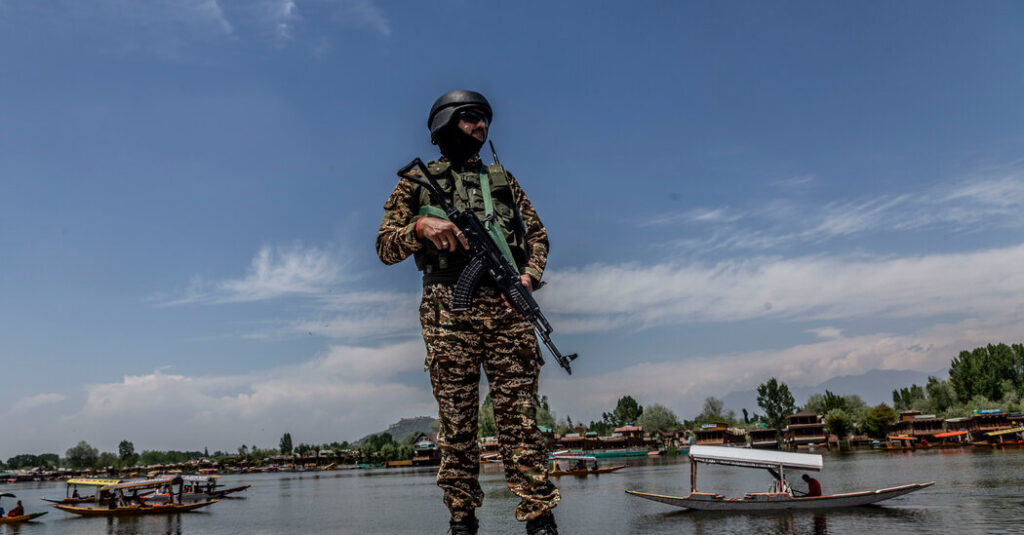The spark for the latest round of escalation between India and Pakistan, the most expansive fighting between the enemies in decades, was a terrorist slaughter of civilians in Kashmir last month.
A group of attackers managed to puncture the semblance of calm that the Indian government had been projecting on its side of the troubled Kashmir region, long the flashpoint of dispute between the two neighbors. The attackers came out of the woods in a scenic picnic spot and killed 26 men. The men, almost all of them Hindu, were identified by their religion, and many of them were killed in front of their wives and families, according to witness accounts.
A little known group called the Resistance Front claimed responsibility. The Indian government said that the group was a front for a broader terrorist apparatus that has operated out of Pakistan, and it announced a series of strikes against Pakistan that has now broken into military conflict. Pakistan has rejected those claims.
Here is what we know about the groups that India said it had targeted in its military strikes.
What are the two main groups India targeted?
Lashkar-e-Taiba, which was founded in the 1980s, has long been suspected of masterminding from Pakistan some of the worst terrorist attacks in India. It was added to the U.N. sanctions list in 2005.
One of the deadliest attacks the group orchestrated was the 2008 slaughter in Mumbai, India’s financial hub, during which more than 160 people were killed. Nearly a dozen gunmen arrived on boats and waged a day of carnage, including taking hostages at a major hotel. One of the attackers was captured alive, and much of the account of the attack’s ties to Pakistan came from his confessions. He was sentenced in India in 2010 and executed in 2012.
Pakistan has confirmed Lashkar-e-Taiba links to past violence in India but says that the group was outlawed and disbanded long ago. The group’s founder, Hafiz Saeed, is free despite brief periods of detention, and Indian officials say that the group continues its activities through multiple cover organization and offshoots, such as the Resistance Front.
Jaish-e-Mohammed, the second group that Indian officials said they had targeted in their attacks, has long had a major hand in the militancy in Kashmir. But its activities have not been limited to there.
The group’s founder, Masood Azhar, was imprisoned in India in the 1990s for militant activity in Kashmir but was released as part of a hostage deal in 1999. Hijackers took an Indian Airlines flight to Kandahar, Afghanistan, and demanded the release of Mr. Azhar and other militants in return for freeing the more than 150 passengers they were holding.
Jaish-e-Mohammed is accused of multiple deadly attacks in Kashmir, including the 2019 bombing of an Indian military convoy that brought the two countries into a brief conflict. It was also behind a deadly attack on the Indian Parliament in 2001.
What did India achieve in its strikes?
India’s military forces said that they had struck nine locations in Pakistan in their operation early on Wednesday morning, including facilities associated with the two terrorist outfits.
How many people were killed and the extent of any damage to the groups’ infrastructure was not entirely clear. The two sides had widely different claims.
Indian officials, briefing lawmakers, said that they had killed about “100 terrorists” in their strikes. The Pakistani military put the number of deaths at 31.
On the ground, it was clear that many of the strikes had hit facilities associated with the two terrorist groups, though it was not clear whether the facilities were current or old.
In Bahawalpur, in Punjab, Pakistan’s most populous province, a strike on a compound associated with Mr. Azhar killed 13 people, including 10 members of Mr. Azhar’s family. It was the deadliest of the strikes.
Another strike in Muridke, a town about 25 miles from the Pakistani capital, Lahore, hit a building complex previously used as Lashkar-e-Taiba’s headquarters, killing three people. But Pakistani officials said that they had taken over the building in 2019 after they had banned another Lashkar front outfit.
Four other sites targeted were said to be small seminaries and mosques linked in the past with the militant groups, in Punjab and in the Pakistan-administered part of Kashmir.

